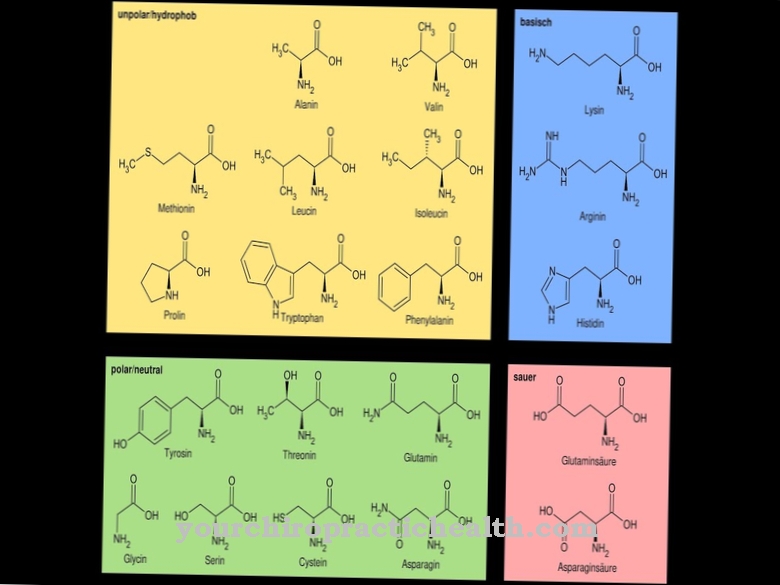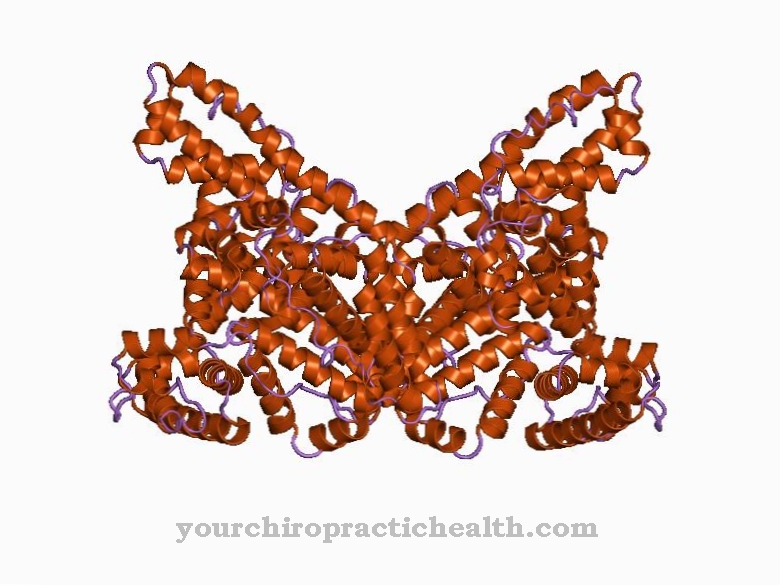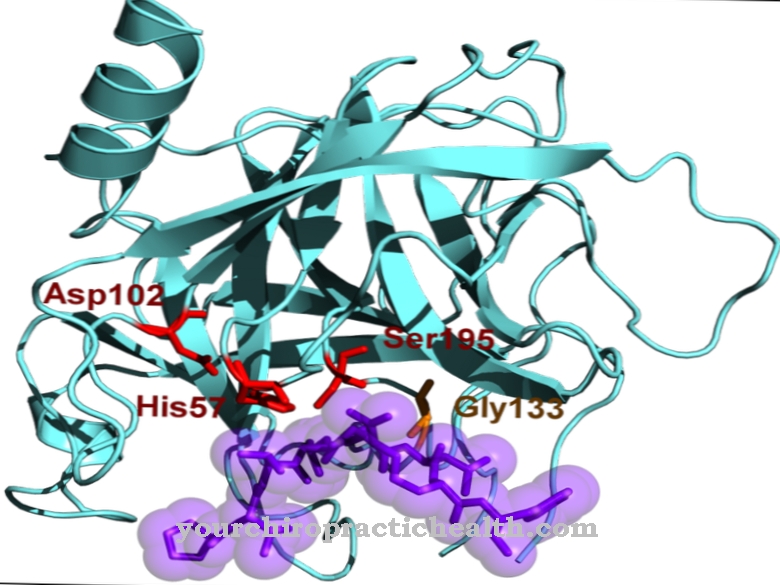Adenosine diphosphate (ADP) is a mononucleotide with the purine base adenine and plays a central role in all metabolic processes. Together with adenosine triphosphate (ATP) it is responsible for the energy turnover in the organism. Most disorders in the function of ADP are mitochondrial.
What is adenosine diphosphate?
As a mononucleotide, adenosine diphosphate consists of the purine base adenine, the sugar ribose and a two-part phosphate chain. The two phosphate residues are linked to one another via an anhydride bond. When a further phosphate residue is absorbed, adenosine triphosphate (ATP) is generated while consuming energy.
ATP is in turn the central energy store and energy carrier in the organism. In the case of energy-consuming processes, the third phosphate residue is also given off, whereby the lower-energy ADP is formed again. However, when ADP releases a residue of phosphate, it creates adenosimonophosphate (AMP). AMP is a mononucleotide of ribonucleic acid. ADP can also be formed from AMP by taking up a phosphate residue. This reaction also requires energy. The more phosphate residues the mononucleotide contains, the more energetic it is.
The negative charge of the phosphate residues in a densely packed space cause repulsive forces, which particularly destabilize the most phosphate-rich molecule (ATP). A magnesium ion can stabilize the molecule somewhat by distributing the tension. Even more effective stabilization is achieved, however, through the regression of ADP with the release of a phosphate residue. The released energy is used for energetic processes in the body.
Function, effect & tasks
Although adenosine diphosphate is overshadowed by adenosine triphosphate (ATP), it has the same great importance for the organism. ATP is called the molecule of life because it is the most indispensable energy carrier in all biological processes. However, the effects of ATP could not be explained without ADP.
All reactions are dependent on the high-energy binding of the third phosphate residue with the second phosphate residue in ATP. The release of the phosphate residue always takes place during energy-consuming processes and the phosphorylation of other substrates. ADP is created from ATP. When a substrate molecule that is energetically activated by phosphorylation transfers its phosphate residue back to ADP, the more energy-rich ATP is created. Therefore the system ATP / ADP should actually be considered in its entirety.
Through the action of this system, new organic substances are synthesized, osmotic work is carried out, substances are actively transported through biomembrane and even mechanical movement is induced during muscle contraction. Furthermore, ADP plays its own role in many enzymatic processes. It is part of coenzyme A. As a coenzyme, coenzyme A supports many enzymes in the energy metabolism. So it is involved in the activation of fatty acids.
It is made up of ADP, vitamin B5 and the amino acid cysteine. Coenzyme A has a direct influence on fat metabolism and indirectly on carbohydrate and protein metabolism. ADP also plays a role in clotting blood. By attaching to certain receptors of blood platelets, ADP stimulates increased platelet aggregation and thus ensures a faster healing process for bleeding wounds.
Education, occurrence, properties & optimal values
Adenosine diphosphate occurs due to its great importance in all organisms and all cells. Its main importance, together with ATP, is for energy-transferring processes. ATP and thus also ADP occur in large quantities in the mitochondria of the eukaryotes because the processes of the respiratory chain take place there. In the case of bacteria, of course, they are in the cytoplasm.
ADP is originally produced by the addition of a phosphate residue to adenosine monophosphate (AMP). AMP is a mononucleotide of the RNA. The starting point of the biosynthesis is ribose-5-phosphate, which attaches molecular groups of certain amino acids via various intermediate steps until the mononucleotide inositol monophosphate (IMP) is formed. In addition to GMP, AMP is ultimately formed through further reactions. AMP can also be recovered from nucleic acids via the salvage pathway.
You can find your medication here
➔ Medication for fatigue and weaknessDiseases & Disorders
Disturbances in the ATP / ADP system occur mainly in so-called mitochondrial diseases. As the name suggests, these are diseases of the mitochondria. The mitochondria are cell organelles in which most of the energy-producing processes take place via the respiratory chain.
This is where the building blocks of carbohydrates, fats and proteins are broken down to produce energy. ATP and ADP are of central importance in these processes. It has been found that in mitochondrial disease, the concentration of ATP is lower. The causes are manifold. Genetic causes can disrupt the formation of ATP from ADP. The particular impairment of strongly energy-dependent organs was discovered as a common feature of all possible genetic diseases. The heart, the muscular system, the kidneys or the nervous system are often affected. Most diseases are rapidly progressing, although the disease process varies from person to person.
The differences may be due to the different number of mitochondria affected. Mitochondrial diseases can also be acquired. In particular, diseases such as diabetes mellitus, obesity, ALS, Alzheimer's disease, Parkinson's disease or cancer are also associated with disorders of mitochondrial function. The body's energy supply is impaired, which in turn leads to further damage to heavily energy-dependent organs.
However, ADP also has some important functions beyond energy-transferring processes. Its effect on blood clotting can also lead to blood clots in unwanted places. To prevent thrombosis, strokes, heart attacks or embolisms, the blood of people at risk can be thinned or ADP inhibited. ADP inhibitors include the drugs clopidogrel, ticlopidine or prasugrel.













.jpg)

.jpg)
.jpg)











.jpg)